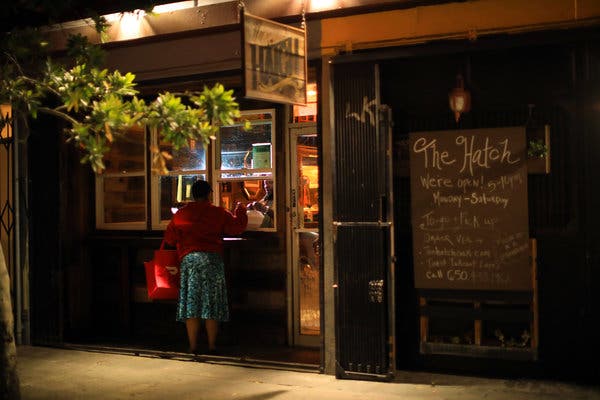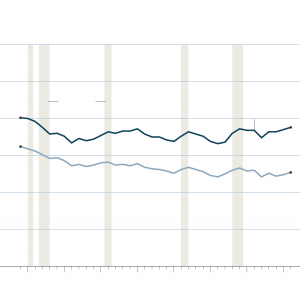Good morning.
(Sign up here to get California Today delivered to your inbox.)
First, we have a quick update on rising Covid-19 case numbers:
On Wednesday, during his virtual news briefing, Gov. Gavin Newsom sought to walk a fine line between acknowledging the virus’s troubling spread and justifying the state’s continued reopening — something that observers, particularly in parts of the state that are harder hit, have begun to question more vocally.
“I want to remind everybody that we are still in the first wave of this pandemic,” Mr. Newsom said. “That said, all throughout the last number of months, we’ve been preparing — we haven’t been waiting, we haven’t been describing ourselves as victims of fate.”
There have been record numbers of new cases in recent days, he said, including over the past day, when 7,149 new cases were reported.
[See the latest updates from around the country.]
There have also been 95,970 Covid-19 tests in the state over the past day, Mr. Newsom noted — well above the roughly 60,000 daily tests the state said it would need.
He said that 4,095 people were hospitalized with Covid-19 and 1,268 people were in intensive care with the virus, but that’s just about 8 percent and 30 percent of the capacity of those systems, respectively. The state has more than unused 11,000 ventilators.
Still, the governor pleaded with residents — many of whom he acknowledged are now gathering with friends and relatives — to continue practicing social distancing, to stay outside whenever possible and to wear masks.
“The reality is people are mixing,” he said, “and that’s increasing the spread of the virus.”
Mr. Newsom also said that the state would withhold money from a $2.5 billion pool in the state budget for pandemic aid if local leaders refuse to enforce state rules. Some sheriffs have said, for instance, that they won’t enforce a statewide mask order.
“For the state of California,” he said, one enforcement tool “is the power of the purse.”
[Track coronavirus cases in each California county.]
An Oakland bar navigates reopening
My colleague Jack Nicas usually covers tech in the Bay Area, but recently he snagged what sounded like a dream assignment: reporting on his local bar. It was actually heart-wrenching.
Here’s an update about the Hatch, an Oakland watering hole:
On March 15, Gov. Gavin Newsom called for the state’s restaurants and bars to close to slow the spread of the coronavirus. Restaurateurs and bar owners across California knew they were in for a struggle, but they expected the closure wouldn’t last much more than a month.
Three months later, California’s restaurants and bars are now just starting to open. In many cases, diners are kept outside, and some bars without kitchens are remaining shuttered.
For the public, the lockdown has been an inconvenience. Many of us have sharpened our cooking skills — or become even more reliant on takeout and delivery. But for many of the millions of Californians who work in the service industry, the past few months have been economic anguish.
When the lockdown began, I started following my local watering hole in Oakland, a side-street hideaway called the Hatch, to understand the economic toll on the bar and its staff. In that story, which we published earlier this month, I wrote about the bar’s owner, Louwenda “Pancho” Kachingwe, and his creative efforts to save the Hatch, including battling with delivery apps and scrambling for a stimulus loan. By the time we published, he had burned through $40,000 of the bar’s emergency funds and his personal money, but he had some hope after securing a $72,500 federal loan.
I also kept up with several of his employees. Santos, the 56-year-old cook, lost his job the same day as his six children and hunkered down in a three-bedroom house he shared with 11 family members on the outskirts of Oakland. They gathered each night to pray for a way to pay their bills. The last time we spoke, they had missed their latest rent payment. Maria, the 55-year-old undocumented cleaner, battled extreme back pain that turned out to be cancer while also struggling to pay rent.
Both said they were fortunate not to have been touched by the virus; money was their biggest worry.
And Abel Oleson, a 34-year-old bartender, had $20 to his name shortly after the lockdown began but soon was making twice as much as he did at the Hatch with his stimulus-boosted unemployment checks.
When we published the story on June 11, the situation for the Hatch and many of its employees looked dire.
[Read the full story here.]
But late last week, Oakland officials told Mr. Kachingwe that he could reopen on June 19 for outdoor seating (although he didn’t have any). He wasn’t prepared, like many of the neighboring restaurants, but now he is rushing to get ready. He is working with the city to close the one-way street outside his bar so he can move tables outside (the fruits of his monthslong lobbying effort) and is installing new slushie machines and a freezer for ice cream.
He aims to reopen next Wednesday. He has ordered branded cups to commemorate the moment, and is hoping that pent-up demand will help boost sales to somewhere near pre-virus levels — though he’s not optimistic.
There is other good news. After we published the story, Oaklanders who love the Hatch and readers from around the world donated more than $21,000 to the bar. Mr. Kachingwe said he would use some of the money on a digital ordering system he plans to install at a new takeout window he built into the kitchen. Most of the remaining funds would go to his staff, he said, including enough to cover Santos’s and Maria’s rents for the next three months.
When I first interviewed Mr. Kachingwe at the Hatch, on the final night before the lockdown, he told me that on a scale of one to 10, his level of concern that the bar would make it was a nine. Now his anxiety is a four.
“At least we can reopen,” he said. “We can work out the details on how to make it work.”
Yet he remained concerned that a surge in virus cases could force him to close again.
“That’s just a nightmare scenario,” he said.
Here’s what else to know today
We often link to sites that limit access for nonsubscribers. We appreciate your reading Times coverage, but we also encourage you to support local news if you can.
-
A strong earthquake rattled Central California on Wednesday, setting off a rockslide near Mount Whitney and prompting campgrounds to be evacuated. It was a magnitude 5.8 quake centered near Lone Pine. [The New York Times]
-
A large increase in coronavirus infections in San Diego County has thrown into doubt whether the University of California, San Diego will be able to allow students on campus for the fall quarter. [The San Diego Union-Tribune]
-
California voters will decide the fate of the state’s affirmative action ban in November. [The Associated Press]
-
“This isn’t just a small drop in the bucket. It’s a historical moment.” The Oakland school board voted to eliminate its police force from school campuses. [The Mercury News]
California Today goes live at 6:30 a.m. Pacific time weekdays. Tell us what you want to see: [email protected]. Were you forwarded this email? Sign up for California Today here and read every edition online here.
Jill Cowan grew up in Orange County, went to school at U.C. Berkeley and has reported all over the state, including the Bay Area, Bakersfield and Los Angeles — but she always wants to see more. Follow along here or on Twitter.
California Today is edited by Julie Bloom, who grew up in Los Angeles and graduated from U.C. Berkeley.



















